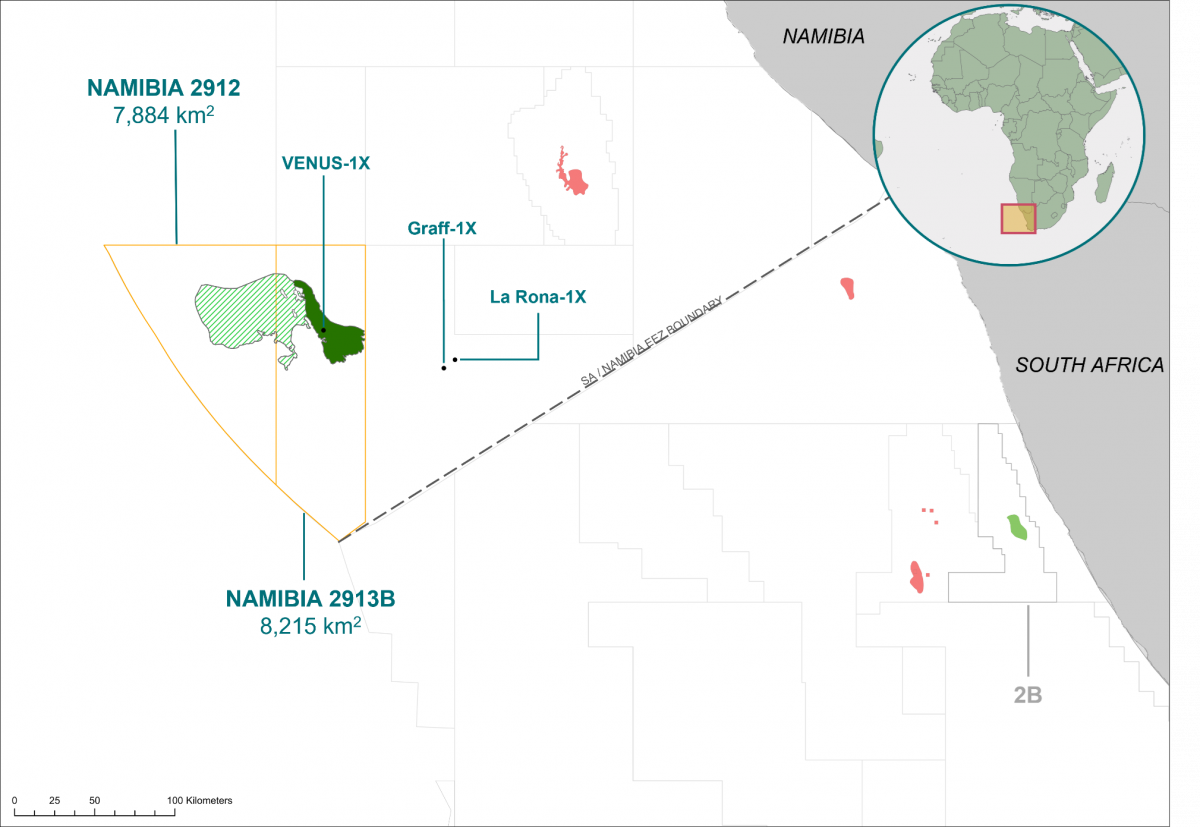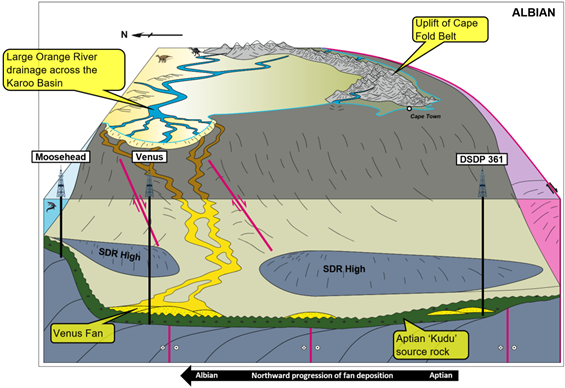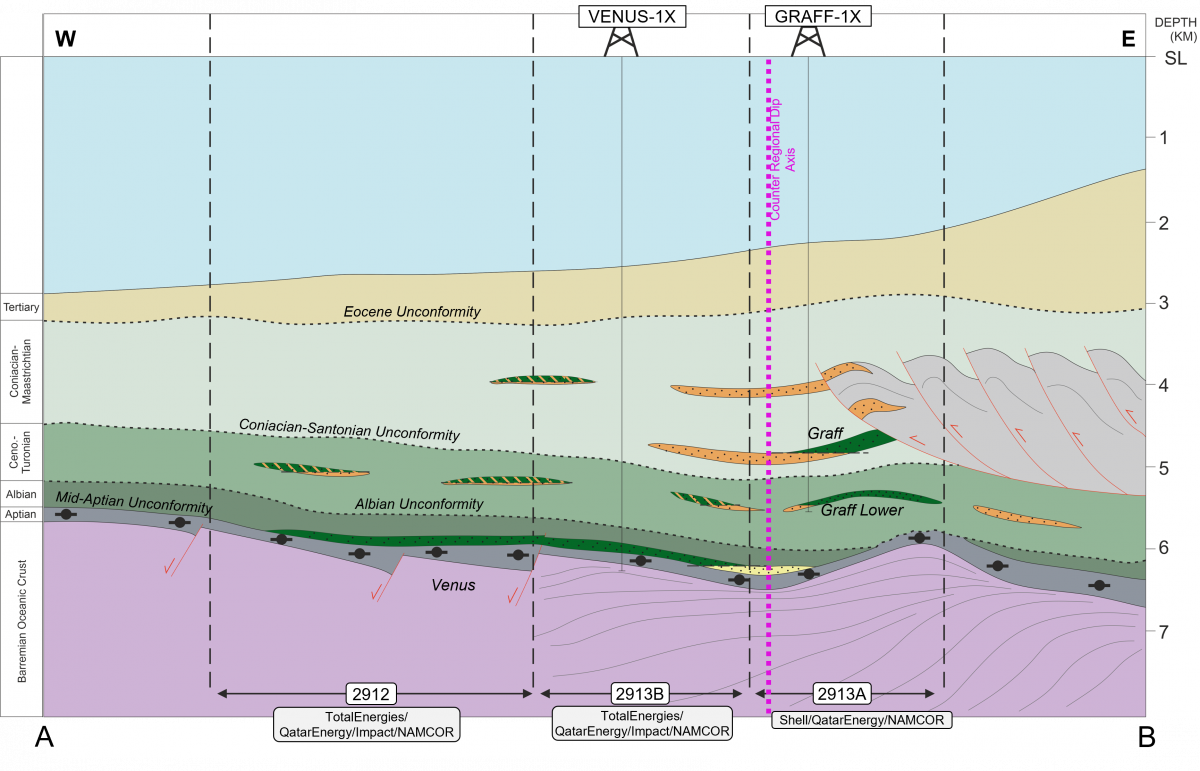OVERVIEW
| Licence | 2912 & 2913B |
| Acreage | 16,099 km2 |
| Water Depth | 3,000m – 3,900m |
| Impact Interest | 9.5% (Block 2912), 9.5% (Block 2913B) |
| Partners | TotalEnergies (Operator), Qatar Energy, Namcor |
Blocks 2912 and 2913B are located within the northern part of the Orange Basin, an area that has attracted significant interest and excitement within the exploration community. The Venus discovery sits in the Orange Basin, approximately 290 kilometres off the coast of Namibia, in the deep offshore.
In February 2022, the Operator TotalEnergies, successfully drilled the Venus-1X well to a total depth of 6,296m, discovering significant quantities of light, sweet oil, with associated gas within an Albian basin floor fan deposit.

Petroleum Exploration Licence 56, Block 2913B (Figure 1), is located offshore southern Namibia and covers approximately 8,215km² in water depths up to 3,000 metres. Impact entered the licence as Operator in 2014, acquiring 2D, then 3D seismic data which defined the Venus prospect. In 2017 Impact was subsequently joined by TotalEnergies, who bring significant deep-water drilling expertise to the Joint Venture, and in 2019 by QatarEnergy.
IMPACT VISITS THE MAERSK VOYAGER
GEOLOGICAL SETTING
Whilst previous exploration wells since the Kudu Field discovery proved disappointing in Namibia, the ubiquitous presence of a World-Class source rock, known as the ‘Kudu’ shale, had kept the light of intrigue alive for committed explorers. Impact had posited that the focus of exploration required a shift from the shelf and slope to the ultra deepwater plays further out to the west, directly ahead of the Orange River system of southern Africa (Figure 2).

High fidelity 2D and 3D seismic revealed an extensive basin floor fan deposit of Albian age, directly overlying the ‘Kudu’ shale source rock. The fan is known as the ‘Venus’ Fan, that had subsequently been placed into a favourable, counter-regional trapping configuration. The trap was formed due to the differential loading of overlying mass-transport deposits and this process pre-dates the onset of source rock oil maturation.
The presence of a viable hydrocarbon filled trap was further de-risked by extensive depth conforming seismic anomalies over the northern part of the Venus Fan (Figure 3).

The light, sweet oil found at Venus, resides within high quality, thick, blocky turbiditic sands. Initial analyses from the Venus-1X well suggest that the discovery has confirmed or, in most-cases, exceeded pre-drill metrics.

The discovery of Shell’s Graff Field within the neighbouring 2913A block, proves the potential for further exploration upside within the Upper Cretaceous interval above the Venus discovery (Figure 4).